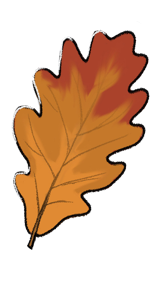- Viruses are on the edge of the five kingdoms of living things, in that they do not comprise of a livings cells, but
- are particles dependent on a host's living cell for their propogation.
- Viruses tend to have been discovered by the disease they inflict upon their host, therefore the orginal classification has been accordingly;
- in Humans Health: Conditions and Diseases: Infectious Diseases: Viral,
- Health: Conditions and Diseases: Respiratory Disorders,
- other Animals or Plants.
- Other websites may not deal with the classification according to taxonomy.
- Websites about the study of viruses and hosts other than humans may be found in Science: Biology: Microbiology: Virology.
- The websites here focus on the difference between the virus particles, rather than their host,
- providing possible taxonomic classification, as with others in the parent categories.
More information
Related categories 3
Sites 11
Educational resource about what defines life and whether viruses fit into this definition.
Overview of the Bunyaviridae genus Tospovirus associated with worldwide crop losses, such as Tomato Chlorotic Spot Virus. Includes related links at the University of Florida.
Research project in April 2009 by Michaela Weisser at the University of Wisconsin-LaCrosse.
Research project by Kayleen Kinsley on the human immunodeficiency virus, including its classification, nutrition, reproduction, habitat, history and information on the disease it causes.
Student project with taxonomy, phylogeny, anatomy, physiology and human significance.
A comprehensive index of viruses with picture gallery, identification and software tools.
Database allowing browsing of the taxonomic tree, organism modifiers, bacterial phages and environmental samples.
Article examining the evidence for how the first viruses may have appeared and how viruses, like other parasites, co-evolved with their hosts.
Information for taxonomic classifications, families, hosts, epidemiology and molecular biology database of nucleotides and proteins.
Article on history, classification, mode of infecting bacteria, their replication and applications, with references and related links.
Overview of phenotypic characteristics, such as morphology, nucleic acid type, mode of replication, host organisms, and the type of disease they cause. Includes historical references and related links.
Student project with taxonomy, phylogeny, anatomy, physiology and human significance.
Database allowing browsing of the taxonomic tree, organism modifiers, bacterial phages and environmental samples.
Overview of the Bunyaviridae genus Tospovirus associated with worldwide crop losses, such as Tomato Chlorotic Spot Virus. Includes related links at the University of Florida.
Educational resource about what defines life and whether viruses fit into this definition.
Information for taxonomic classifications, families, hosts, epidemiology and molecular biology database of nucleotides and proteins.
Overview of phenotypic characteristics, such as morphology, nucleic acid type, mode of replication, host organisms, and the type of disease they cause. Includes historical references and related links.
Article on history, classification, mode of infecting bacteria, their replication and applications, with references and related links.
Research project in April 2009 by Michaela Weisser at the University of Wisconsin-LaCrosse.
A comprehensive index of viruses with picture gallery, identification and software tools.
Article examining the evidence for how the first viruses may have appeared and how viruses, like other parasites, co-evolved with their hosts.
Research project by Kayleen Kinsley on the human immunodeficiency virus, including its classification, nutrition, reproduction, habitat, history and information on the disease it causes.
Other languages 1

Last update:
October 15, 2023 at 5:25:13 UTC

Check out
Arts: Visual Arts: Public Art: Street Art: Guerrilla Art: Graffiti: Artists: United States: California
- Recently edited by shedragon
- Recently edited by shedragon